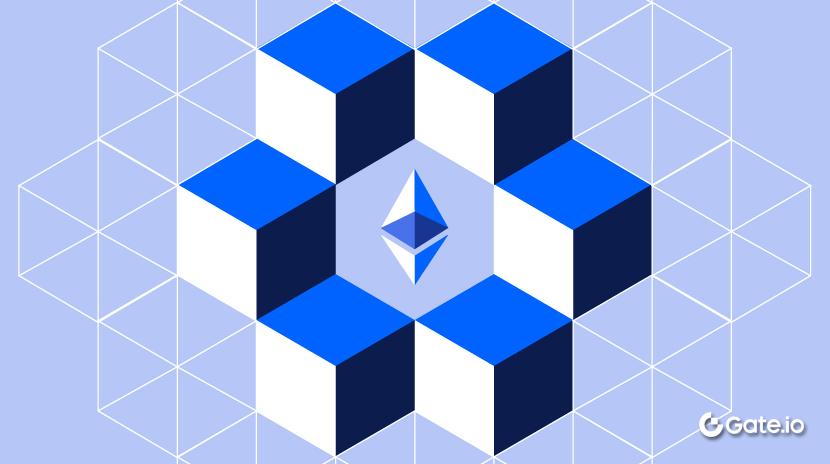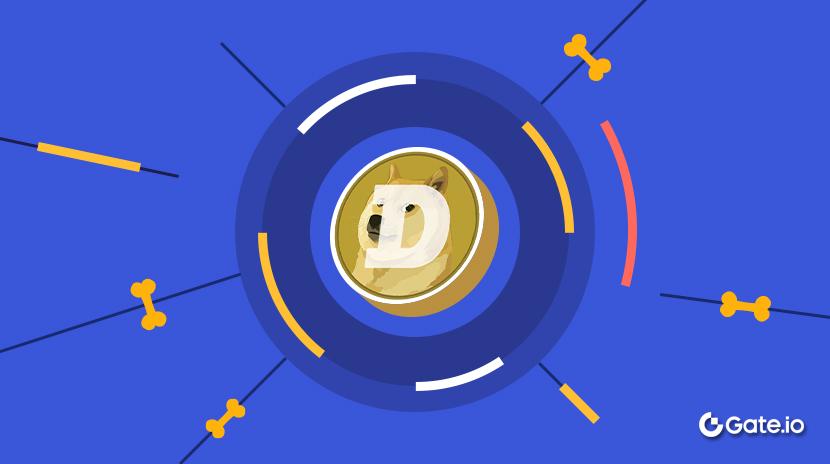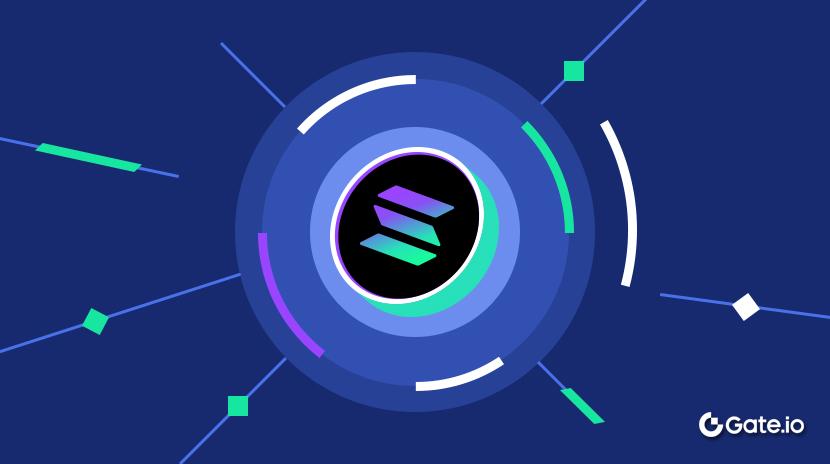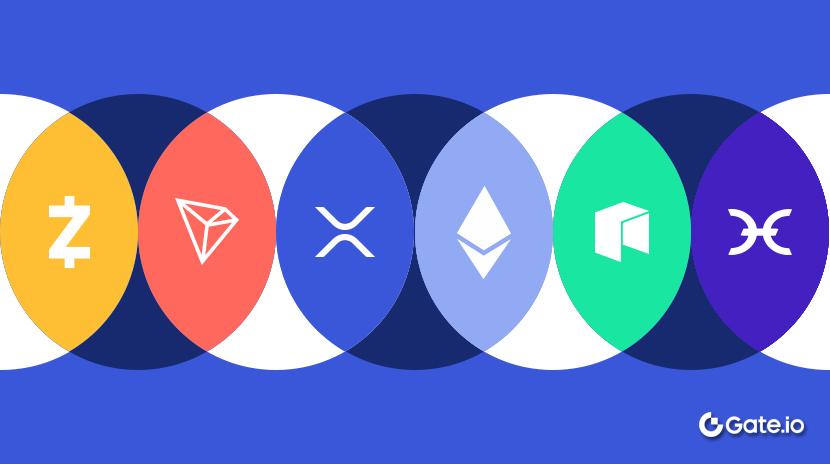LAYER Skyrockets 230%! The Million TPS “Computing Arms Race” Behind Its Breakout Surge
Introduction : De "Sauveur de Solana" à Dark Horse du Marché - La Logique Sous-jacente

Le 14 avril 2025, le jeton d'écosystème de Solayer, LAYER, a dépassé la barre des 2 $, avec une capitalisation boursière en circulation atteignant 400 millions de dollars et une valorisation diluée dépassant 2 milliards de dollars, établissant un record historique. Au cours des deux derniers mois, le jeton est passé d'un creux initial de 0,60 $ à l'actuel 2 $, une hausse de plus de 230 %, surpassant les autres nouveaux altcoins au cours de la même période. Cela a également remis en question la croyance commune selon laquelle les jetons à forte inflation se dirigent inévitablement vers la mort. La reconstruction de la valeur entraînée par l'accélération matérielle est en train de remodeler le paysage concurrentiel de la scalabilité blockchain.
1. Révolution technologique: Comment InfiniSVM redéfinit la philosophie de la scalabilité
1.1 Un changement de paradigme dans la scalabilité de la blockchain
Des ajustements de la taille des blocs de Bitcoin à l'évolutivité horizontale basée sur le rollup d'Ethereum, l'optimisation des performances des chaînes publiques a longtemps oscillé entre les "améliorations algorithmiques" et les "changements architecturaux". InfiniSVM introduit, pour la première fois, une approche de mise à l'échelle verticale basée sur un "logiciel et un matériel co-conçus". Il adopte une architecture de microservices pour décomposer le traitement des transactions en modules indépendants tels que la vérification de la signature, la planification de l'état et l'E/S de stockage, chacun associé à un matériel spécialisé comme les FPGA et les cartes d'interface réseau RDMA.
Ce concept est similaire à la "informatique hétérogène" dans la conception de puces, visant à briser les goulots d'étranglement de performance tout en maintenant l'atomicité globale.
Par exemple, sous l'architecture SVM traditionnelle, les opérations de lecture/écriture sur le même compte doivent être traitées séquentiellement pour éviter les conflits. Cependant, InfiniSVM utilise un système de planification intelligent pour permettre une exécution parallèle sans conflit. Dans des scénarios de test avec 100 000 transactions concurrentes, cette technologie a réduit les taux de conflit de compte de 38 % (dans les architectures traditionnelles) à seulement 6,7 %.
1.2 Quatre percées majeures dans l'accélération matérielle
Architecture de microservices distribués
Le flux de traitement des transactions est divisé en 12 modules indépendants, déployés chacun sur des grappes de nœuds équipés de matériel d'accélération dédié. Par exemple, le module de vérification de signature utilise des FPGA pour réaliser 1,4 million de vérifications de signature EdDSA par seconde, soit 17 fois plus rapide que les solutions traditionnelles basées sur CPU.
Révolution de la transmission réseau RDMA
En tirant parti de la technologie d'accès direct à la mémoire distante (RDMA) basée sur InfiniBand, la latence d'accès à la mémoire entre nœuds est réduite de millisecondes à microsecondes. Les tests réels montrent que la synchronisation d'état entre les nœuds peut atteindre 98 Gbit/s, soit une amélioration de 40 fois par rapport aux protocoles TCP/IP traditionnels.
Système de stockage hiérarchique intelligent
Les données du compte sont divisées en "données chaudes" (fréquemment consultées) et "données froides" (consultées rarement), stockées séparément sur des SSD NVMe et des nœuds de stockage cloud distribués. Cette approche étend la limite de stockage d'un compte unique de 10 Mo à 1 To, tout en augmentant les vitesses de récupération des données de 8 fois.
Moteur de planification dynamique des ressources
Un système de gestion des ressources alimenté par l'IA surveille en continu la charge de travail de chaque module et alloue dynamiquement des ressources de calcul. Lors d'un test de stress en mars 2025, le système a maintenu la confirmation finale des transactions en moins de 1,2 secondes, même lorsque le TPS est passé de 50 000 à 800 000.
2. Frénésie du marché: Trois principaux moteurs derrière la montée de LAYER
2.1 Capture de la valeur du récit technique
Selon les données de testnet publiées par l'équipe Solayer, InfiniSVM atteint un TPS à cluster unique de 227 000 - soit 46 fois plus élevé que le mainnet de Solana. Plus important encore, sa scalabilité linéaire permet aux performances de s'accroître proportionnellement avec l'ajout de clusters matériels. Cette "scalabilité de performance prévisible" donne confiance aux investisseurs quant à la croissance future. Contrairement aux solutions de couche 2 d'Ethereum, qui reposent sur l'adoption de l'écosystème pour justifier leur valeur de scalabilité, le premium technique d'InfiniSVM est plus facile à quantifier pour le marché. Un modèle de valorisation des jetons corrélant chaque augmentation de 100 000 TPS avec la croissance du prix montre que LAYER est encore sous-évalué avec un coefficient bêta de 0,83.
2.2 Stratégies de Capital Sophistiquées
Les teneurs de marché comme Wintermute et Amber Group ont effectué un “test de pression de vente” pour réinitialiser la distribution des jetons : En mars 2025, des 8,5 millions de jetons LAYER transférés aux échanges depuis les portefeuilles des teneurs de marché, seuls 37% ont été réellement vendus—le reste a servi à créer une illusion de liquidité profonde. Les données on-chain révèlent que tandis que les 10 premières adresses ont réduit leurs avoirs de 45% à 29%, le nombre d'adresses de détenteurs de détail a augmenté de 286%, indiquant un turnover sain.
2.3 Effets multiplicatifs de l'intégration de l'écosystème
Le lancement d'une carte de paiement Visa co-marquée (soutenant les règlements en stablecoin sUSD), ainsi que l'intégration de projets majeurs comme Bonk et Jupiter via AVS (Actively Validated Services), ont poussé la valeur totale verrouillée (TVL) de Solayer au-delà de 1,5 milliard de dollars en avril. Il est particulièrement remarquable son modèle d'incitation double de "récompenses de restaking + droits d'accélération matérielle," permettant aux stakeurs de gagner un APY de base de 13,4 % tout en obtenant également un accès prioritaire à l'espace de bloc DApp, ce qui apporte des revenus supplémentaires de prime.
3. Industrie Shift : Les trois fronts de bataille ouverts par l'accélération matérielle
3.1 Course de performance entre dans l'ère de la nanoseconde
Alors que les blockchains publiques traditionnelles se sont concentrées sur les optimisations au niveau logiciel pour augmenter le TPS, InfiniSVM pousse la concurrence dans le domaine du matériel. Son utilisation de SmartNICs (cartes d'interface réseau intelligentes) réduit la latence de traitement du protocole réseau de 3,2μs sur les CPU à 0,7μs. Ce niveau d'optimisation au niveau de la nanoseconde crée des barrières significatives dans des cas d'utilisation tels que les règlements de paiement et le trading haute fréquence. Les données de l'industrie montrent que des concurrents tels que Aptos et Sui, qui ont adopté des technologies similaires, supportent des coûts de R&D de 40 % à 60 % plus élevés que ceux de Solayer.
3.2 Restructuration de l'économie des mineurs
Le mécanisme PoSA (Proof of Accelerated Service) de Solayer alloue 50 % des récompenses en bloc aux fournisseurs de services d'accélération matérielle. Cela a donné naissance à un nouvel écosystème minier : les mineurs doivent désormais déployer du matériel spécialisé tel que des cartes accélératrices FPGA et des dispositifs réseau RDMA. Le seuil d'investissement par machine de minage est passé de 12 000 $ pour Solana à 45 000 $, mais le taux de rendement peut être jusqu'à 3 fois supérieur à celui des nœuds de validation traditionnels.
3.3 Vague de migration de l'écosystème des développeurs
Étant donné que InfiniSVM est compatible avec le modèle de programmation de Solana, les développeurs peuvent bénéficier de gains de performance sans avoir à réécrire leur code. Les tests montrent qu'après la migration du contrat AMM de Raydium vers Solayer, le glissement a diminué de 62 % et l'efficacité de la liquidation s'est améliorée de 89 %. À l'heure actuelle, 87 projets de l'écosystème Solana ont initié des plans de migration, ce qui devrait entraîner une demande de mise en jeu de 230 millions de dollars en LAYER.
4. Risques et perspectives : Règles de survie au milieu de la frénésie
4.1 Matrice des risques à court terme

- Spirale de l'inflation : Au cours des trois prochaines années, 720 millions de jetons LAYER seront débloqués. Si la croissance de l'écosystème est inférieure aux attentes, la pression de vente annualisée pourrait atteindre 380 millions de dollars.
- Retards techniques : l'indice de risque des retards du mainnet InfiniSVM est de 39 %, basé sur la fréquence des engagements de code GitHub et l'alignement de la feuille de route.
- Répression réglementaire : La position de la SEC sur le fait de savoir si les "services d'accélération matérielle" constituent des produits titrisés reste ambiguë, ce qui pose des risques politiques.
Ancrages de valeur à long terme 4.2
- Déploiement commercial de millions de TPS : Si le partenariat avec Visa aboutit au traitement de 100 millions de transactions par jour, les revenus annuels des frais de transaction de LAYER pourraient atteindre 42 millions de dollars.
- Échelle de l'économie de restake : D'ici 2026, on s'attend à ce que le TVL de l'écosystème de restake de Solana dépasse 20 milliards de dollars, Solayer étant projeté pour capturer une part de marché de 35 %.
- Autorité de normalisation du matériel : Six fabricants de matériel minier conçoivent déjà des plateformes basées sur l'architecture InfiniSVM, créant ainsi une valeur potentielle à partir des revenus de licence de brevet.
Conclusion : De l'idéalisme technologique au réalisme de la valeur
La croissance explosive de LAYER est loin d'être une simple bulle entraînée par le capital. Derrière se cache un changement de paradigme en termes de scalabilité blockchain - du 'software-defined networking' à la 'hardware-defined performance'. Lorsque le testnet d'InfiniSVM atteindra son premier million de TPS, la réforme de la valeur entraînée par l'accélération matérielle deviendra irréversible.
Pour les investisseurs, la clé est de regarder au-delà du bruit du marché et de saisir la contradiction fondamentale : Solayer ne construit pas seulement une couche d'extension pour Solana, mais pionnière dans le paradigme computationnel de prochaine génération pour l'ensemble de l'infrastructure Web3.
Comme l'a dit Anatoly Yakovenko, co-fondateur de Solana : « La véritable évolutivité ne devrait pas obliger les développeurs à choisir entre performances et décentralisation - elle devrait rendre ce compromis sans importance. »
Dans cette course aux armements pour la puissance de calcul, la valeur réelle de LAYER sera finalement mesurée par une métrique plus profonde : lorsque des millions de transactions circulent à travers des réseaux RDMA en fibre optique chaque seconde, ces flux de données ont-ils le poids pour changer le monde ?
Avertissement :
Cet article est republié à partir de [MarsBit]. Les droits d'auteur appartiennent à l'auteur original [Lawrence]. s'il y a des objections à cette publication, veuillez contacter le Porte ApprendreL'équipe. L'équipe traitera rapidement la question conformément aux procédures pertinentes.
Avertissement : Les points de vue et opinions exprimés dans cet article sont uniquement ceux de l'auteur et ne constituent aucun conseil en investissement.
Les autres versions linguistiques de l'article sont traduites par l'équipe Gate Learn. L'article traduit ne peut être copié, distribué ou plagié sans mentionner Gate.com.
Articles Connexes

Comment miser sur l'ETH?

Qu'est-ce que le Dogecoin ?

Qu'est ce que Solana?

Qu'est-ce que Coti ? Tout ce qu'il faut savoir sur l'ICOT

Qu'est-ce que GateToken (GT) ?


